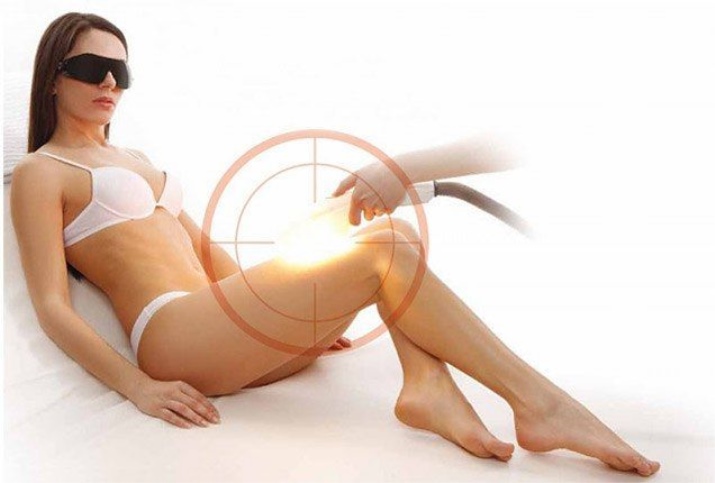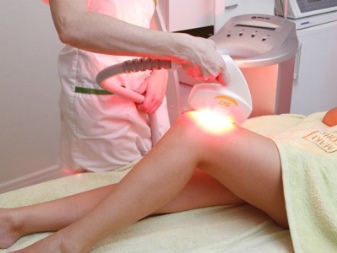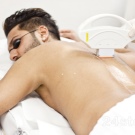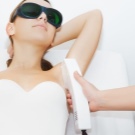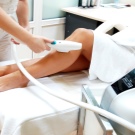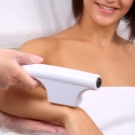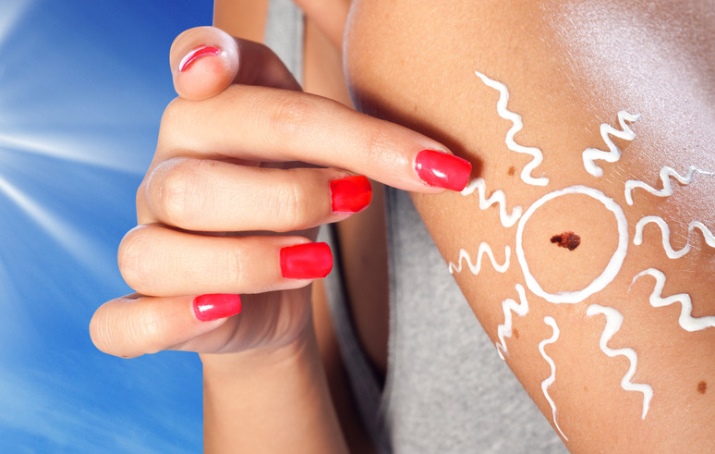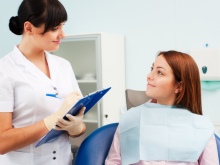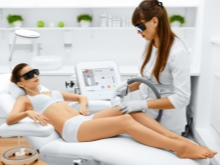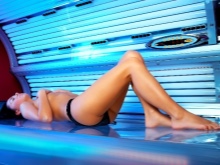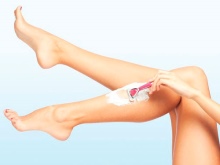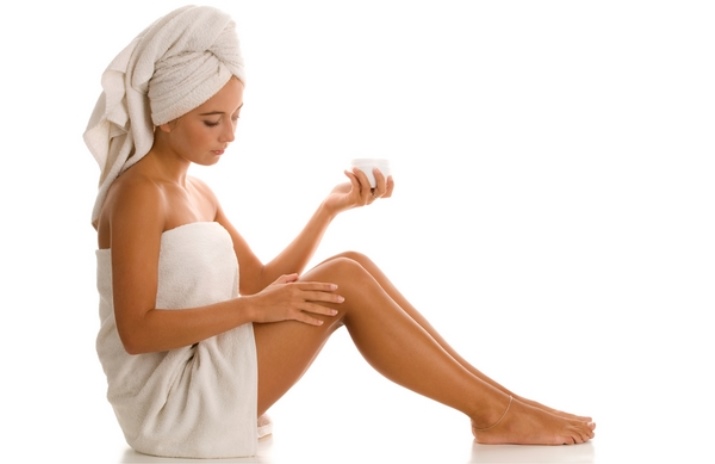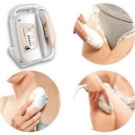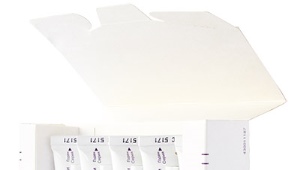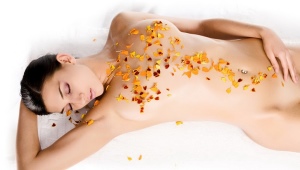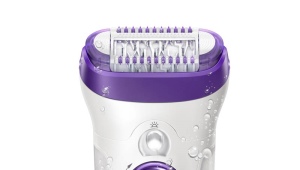Photoepilation
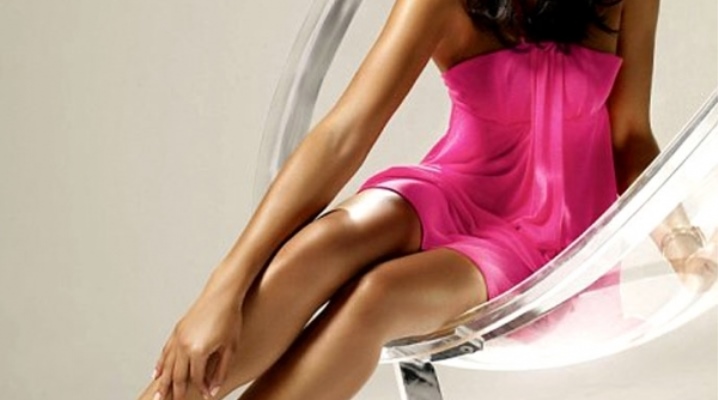
Each woman dreams of a clean and smooth skin without extra hair on it. In the modern world, the beauty market offers a wide variety of products and procedures aimed at combating unwanted hair. Along with the machine, waxing, shugaring, the use of various depilation creams, photoepilation is gaining popularity among not only the female, but also the male part of the population.
What it is?
Epilation is a method of hair removal that has a direct effect on the follicle, destroying it and causing hair loss. This approach to combating unwanted hair contributes to maintaining a longer effect from the procedure. One of the types of hair removal is photoepilation. The basis of this method of hair removal is the use of a high-pulse light wave.
A light wave directed from a special lamp to the hair follicles is converted into heat waves, due to which it has a destructive effect on melanin (a substance responsible for hair color). Moving along the melanin, it brightens the hair and enters the blood vessels, contributing to the coagulability of blood near the bulb, thus limiting its nutrition and leading to destruction and hair loss.
After the first photoepilation, the number of hair is reduced by about 20%, and the remaining 80% is significantly thinner. Repeated use of this procedure leads to atrophy of the follicle and complete cessation of hair growth.
Photoepilation is used to remove hair from the arms, legs, chin, eyebrows. It is also made on the face (to get rid of the antennae above the upper lip). To remove hair in this way is almost painless. You no longer need to shave often to make your skin smooth and velvety.
Operating principle
In comparison with other known methods of hair removal, the effect of photo epilation is not instantaneous, but cumulative. To obtain the desired result will require several sessions. To avoid adverse effects on tissues, the cosmetologist selects an individual program for you (determines the required temperature and prescribes the number of procedures) based on the level of your pain threshold and on the color, thickness of hairs.
The principle of operation of this procedure is the short-term effect of a high-power light wave (flash) on the hair and on their rods. This energy, which was absorbed by the hair cells, is converted into heat, contributing to the heating of the entire structure of the hair and subcutaneous tissues up to 80 ° C. Due to this high temperature, blood coagulation occurs in the capillaries that feed the hair follicle. The result of this process is severe destruction or death of the follicle. When the bulb atrophies, it can no longer perform its functions and the hair gradually dies off.
After this procedure, the hair falls out independently for another 20 days. With the right approach, the impact occurs not only on the follicle itself, but also on the papilla. Due to this, with repeated use of photoepilation, hair growth is disturbed or completely stopped for up to 5 years.
Varieties
To date, there are several varieties of photoepilation, namely:
- IPL photo epilation;
- Elos epilation;
The first method is considered the most widely applicable.This is a radical method of getting rid of unwanted hair, which is based on the use of a broadband light wavelength from 530 to 1200 nm. Her guide becomes melanin. It absorbs a pulse of light, after which the hair shaft is heated. On this rod, heat enters the bulb, causing its destruction. The outbreak affects only the hairs that are in the phase of active growth, therefore it is necessary to perform this procedure repeatedly.
The main device for this procedure is now considered to be the English apparatus. Ipulse. It has the largest area of flares (about 9 cm²), and its analogues are only 3 cm². Such a scale of coverage allows minimizing the time spent on photo-epilation. Also in its package includes a special nozzle for cooling, which helps to make the process more enjoyable.
One of the modifications IPL is elos epilation. This procedure combines two types of energy (radio frequency and light pulse energy). The effectiveness of this method is not better than that of photoepilation, and the sensitivity is much higher. In the presence of dark or tanned skin, the likelihood of a burn is high.
How many sessions are needed?
The result of the first procedure, as well as subsequent sessions - not predictable. It depends on the individual qualities of the hair and the area being treated. On average, after the first photo-epilation, hairs that were at the stage of active growth (approximately 20% of the total amount) are removed permanently. The hairs that did not reach this phase at that time remain intact, as they did not absorb light pulses. After some time, they germinate and there is a need for another procedure. It is because of the individual characteristics of each client is difficult to judge the exact number of sessions required.
Another factor affecting the effectiveness of the ongoing photoepilation, and consequently, the number of sessions needed are:
- Use of the device of insufficient power;
- Lack of adjustment of the device for the desired type of hair;
- Unqualified beautician;
- Insufficient number of flashes.
On average, the recommended number of photo epilation sessions varies from 6 to 10 times. Since after hair removal hair continues to fall out for 2-3 weeks, the interval between the first should be from 3 weeks to 1 month, then - as you grow. The result of completing the full course is the complete cessation of the growth of unwanted hair for a period of 3 to 5 years.
Efficiency
Indeed, the effectiveness of this procedure is very high and the positive feedback from many people is irrefutable proof of that. On average, the effect lasts for about two or three years, but there is no single indicator here, because each person is individual and has its own characteristics that have a direct impact on the result obtained. Significantly prolong the effect of this method of hair removal (after completing the full course) you will be helped by a preventive procedure once a year.
It is necessary to take into account the fact that if you stop visiting procedures or become pregnant (which will lead to hormonal failure), then the result of the work done may be lost.
For this reason, it is strongly recommended to make sure that during this long time (about a year) nothing will prevent you from completing the whole course.
The result is mainly affected by the color of your hair and your skin. For blond, red and gray hair, the efficiency will be significantly reduced. The ideal combination for using this method of hair removal is the presence of light skin and dark hair.
Contraindications
Before the first photoepilation procedure, you need to go through a consultation with a cosmetologist.It will tell you about the pros and cons of this service, select the program and focus your attention on possible contraindications for its implementation. Contraindications are of two types: absolute and relative. For absolute contraindications include:
- Presence of hypertension;
- Diabetes;
- Various cardiovascular diseases;
- Infectious diseases;
- Diseases of the skin;
- Birthmarks;
- Oncological diseases;
- Age up to 16 years;
- Open wounds;
- Propensity to the appearance of keloid scars.
The relative reasons for which photoepilation is dangerous to your health include:
- Pregnancy;
- Allergies;
- Tattoos;
- Tanned skin.
Also photoepilation can be dangerous when breastfeeding. The main reason for this is the presence of any stress on the body of the newly-made mother. Such loads also include the so-called pain syndrome. Due to the fact that photo-epilation is not a completely painless procedure, the resulting load can cause premature loss of milk, so it should be abandoned for a while.
Another reason is the incomplete normalization of the hormonal background, which may be the reason for spending more time and effort on the procedure without getting the proper result. After the restoration of the background, the hair will begin to grow again. Therefore, during lactation, it is necessary to abandon photo-epilation before normalizing and restoring your body.
Rules of preparation and conduct
There are a number of rules and recommendations for the preparation and conduct of photoepilation, the observance of which will help you avoid trouble, get pleasure and maximize the effect of the procedure.
Before the epilation the consultation with the cosmetologist is held, during which you pass the examination, and the master will compile your profile with personal data.
Based on them, he develops an individual photo-epilation program for you. After you pass the flash sensitivity test for your skin. Only after this begins the procedure itself.
Special glasses or eye patch are worn to the client to protect them from unwanted light exposure. The beautician himself performs his work in dark glasses.
A gel is applied to the desired area of the skin (often with aloe vera). With a high sensitivity of the skin to light flashes at least an hour before the procedure, it is recommended to apply anesthetic cream to avoid pain.
The next stage concludes that the master carries out a special manipulator that is connected to the device over the skin. In the place of exposure there will be an unpleasant tingling (its pain depends on your pain threshold). It is at this moment that the right program is important.
The procedure ends with the application of an agent with an anti-inflammatory effect and a compress with a cooling effect on the entire area which has been epilated.
Skin care and possible effects
Despite the safety of use and painlessness of the photoepilation process, in order to avoid possible negative consequences, proper care of the skin and compliance with certain recommendations are necessary before and after the procedure.
Rules that must be followed before the procedure:
- It is forbidden to remove hair using various means, except for the machine, two weeks before photoepilation
- It is forbidden to sunbathe (including tanning) at least two weeks before the procedure. The skin due to melanin (thermal conductor) becomes brown. Having been irradiated with light energy and its transformation into heat energy, melanin will become its conductor not only to the follicle, but also to the skin itself. The result of neglect of this rule can be burns of varying severity.
- It is necessary to abandon the use of antibiotics and tranquilizers two weeks before the procedure.
Rules to follow after the procedure:
- You can not take a bath, go to the bath and visit the pools and spa salons during the week;
- Try to avoid direct sunlight (therefore, it is undesirable to carry out photo epilation in the summer);
- Every day during the week it is necessary to moisturize and nourish the skin with various creams, oils and lotions;
- Refuse to visit a tanning salon, because even after photo epilation there is a risk of burns on the treated areas of the body;
- Try to create less friction between the treated area and various coarse types of fabric so as not to cause even more damage to the skin that has been irritated.
In addition to burns, the possible consequences of photoepilation include:
- The proliferation of keloid scars (if there is a predisposition to their formation);
- The occurrence of allergic reactions;
- Appearance of folliculitis;
- Disturbance of skin pigmentation.
Pros and cons of photoepilation at home
There are also portable devices for photoepilation at home.
Removing hair with a flash of light at home has both its advantages and disadvantages. The advantages of home epilation include:
- Thanks to the power regulator installed on devices for photo-epilation at home, the risk of getting burned, as well as painful sensations during the procedure, are reduced to nothing.
- The effect obtained when using a home instrument for photo-epilation does not differ from that obtained in the salon. After completing a full course of photoepilation (6-10 procedures), the hair will no longer grow.
- Its use does not require additional knowledge. Each portable device has a clear interface, detailed and accessible instructions.
- Most household photoepilators have special modes and attachments for removing hair from any part of the body, including the most sensitive areas, such as the face and bikini. To minimize getting a burn or other skin damage, you need to understand the mechanism of action of the device and choose the best mode for you.
- The use of this device is harmless to your health. The device affects only the upper layer of the skin (about 5 mm), so the internal organs will not be involved.
Also, the procedure for photo epilation at home has a certain number of disadvantages. The main ones include the following:
- Great risk of various allergic reactions and other problems. Due to the lack of professional prior consultation, diagnosis of any contraindications, etc., you can cause great harm to your body.
- A big problem when conducting photoepilation at home can be the selection of high-quality products to protect the skin from light exposure.
- Achieving the desired result may take a longer time.
- Due to the high cost and the need to replace the lamp after a certain number of procedures, the price of a home photoepilation machine will be equal to the cost of a salon photoepilation, but you will not receive advice from a professional master.
Reviews
Reviews of this procedure are different. There are both positive and negative.
Among the negative reviews most often found are those that mention:
- the inability to achieve visible results after the first procedure;
- high price for photoepilation;
- the need for repeated visits to the salon;
- pain during a session in the absence of anesthesia;
- low qualification of masters in salons;
- the need to limit their usual way of life.
Despite all the arguments against it, the overwhelming majority of women point out:
- High efficiency of the procedure;
- Painlessness;
- Process safety;
- Long-lasting result, which is enough for several years.
From the above, we can conclude that photoepilation is really an excellent, practically painless and highly effective method for removing unwanted hair. Otherwise, she would not be able to get such wide distribution and win millions of hearts, not only for women, but also for men.
How photoepilation works, see the following video.

